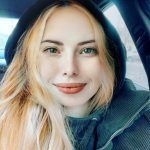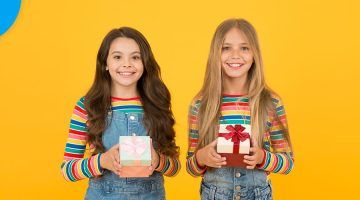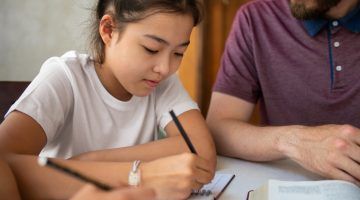How to Memorize Multiplication Tables: 7 Tips for Your Kids
reviewed by Jo-ann Caballes
Updated on May 27, 2024
To learn multiplication tables, create conditions that will facilitate fast understanding and memorization. The innovative education platform Brighterly offers children of different ages to visit individual lessons. The advantage is the professional approach to children. The specialist provides an individual program to improve skills, fill in knowledge gaps, and gain new information.
Should children memorize the multiplication table?
Pupils should learn by heart the multiplication table to develop the core knowledge in math and create the cemented ground for future education and skills. The ability to learn the multiplication table and the result of it brings noticeable effects and consequences in further education.
Children in second, third, and fourth classes are aware of the subtractions and additions. Multiplication is the third basic ability that should be met to go on to divisions. If not, the child will stand up to difficulties during the classes in the future.
How to learn multiplication tables fast?
The fastest way to learn multiplication is to involve a tutor and delegate this mission. No matter how well parents know their children, they are not professional teachers. Therefore, they may face difficulties when teaching a child at home.
Sometimes parents simply do not have enough time and effort to do mathematics with their child. In this case, it is better to ask for help. They conduct classes online and help learn the multiplication table interactively.
The modern education platform Brighterly provides services to children of different ages and levels of knowledge. You can take several lessons and observe whether they are bearing fruit.
The platform includes a lot of interactive methods and worksheets. The class is conducted online. The tutor analyzes the knowledge, determines a student’s aims, and creates an individual program.
The platform can offer your child regular lessons, qualified material and methods, interesting activities, and great results at school.

Click the Book free lesson button and present your child with the opportunity to learn math faster with professional tutors. This is an effective way to help your youngster learn the multiplication table.
How to learn multiplication tables?
To learn times tables, you have to implement two easy principles.
- The first one is understanding and joy. Explain to your child the reason for learning. To make learning fun, create a positive atmosphere and feeling of freedom. It should not be felt like a duty but more like the only way to the future or dreams.
- The second is the usage of methods that you incorporate to remember new tables. How to learn multiplication? Try to implement each method gradually and create a complex system for learning time tables.
Top 3 tips for learning multiplication tables
Before starting to study directly, it is necessary to explain to the child such concepts as:
- the first factor is a number that will be added a certain number of times;
- the second factor is a number showing how many times the first factor must be added to obtain the product;
- product is the value obtained as a result of repeated addition.
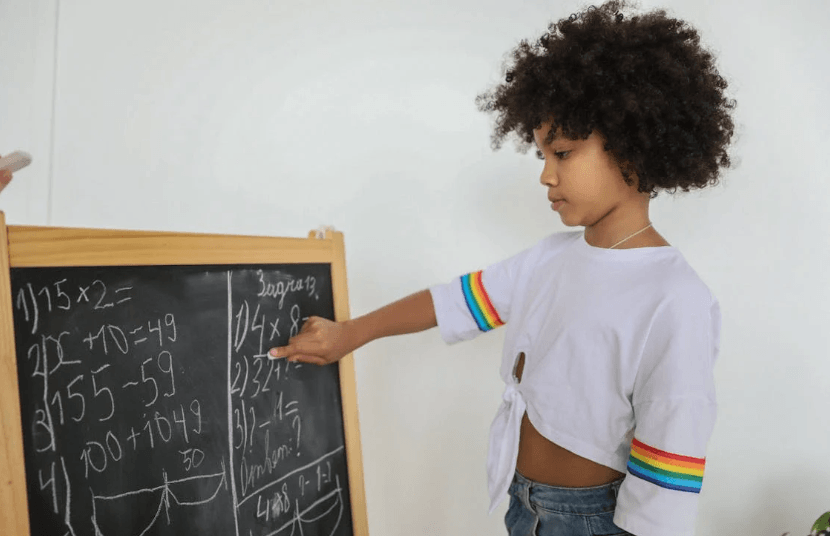
Multiplication belongs to the third core math topic for learning. Hence, explain the relationship between addition, subtraction, and multiplication.
Note: Tell the child that the second action is the first action repeated a certain number of times. This will help to understand the essence of the arithmetic operation and, as a result, to learn the multiplication table. Take a sheet of paper and draw an example to show the repetition of actions.
Also, explain to your child that changing the places of the factors does not change the product. As soon as the second-grader understands these rules, they can learn multiplication and start memorizing the table directly.
How to memorize the multiplication table?
Use tricks to learn multiplication tables with children and make the process joyful. There are 7 tips that are effective for pattern learning:
- Understanding principles
- Memory techniques
- Regularity of practicing
- Easy start
- Repeating aloud
- Interactive practice
- Creating games
Using the mentioned methods in the complex can help your child get knowledge faster.
Understanding principles
Analyzing the multiplication table, you will find certain principles and logical patterns in each line. For instance, the multiples of 10 end in 0, when 5 has the end of 5 or 0. When a child understands the principle of the table, it will be easier to learn and remember it.
Memory techniques
The number of memory techniques is great. You can adopt new methods or turn to those you have already used previously. The most valuable memory techniques are related to visualization or creating your own idea of numbers interactions.
Regularity of practicing
To quickly memorize multiplication tables, you should practice it with your child on a regular basis. Try to spend each day at least half an hour repeating what you have learned before and acquiring new tables. From the first time, the child can find it complicated to sit still for thirty minutes and talk about the same numbers. Thus, you can start from 10 minutes per day and increase this period over time. The main idea is to repeat multiplication tables every day.
Easy start
The first and foremost task of each parent is to show the multiplication table is easy to understand and learn. A simple approach to learning multiplication tables is to start from 2, 5, and 10 tables and end with others. Usually, it comes easily, because multiplying by two is quite straightforward.
Repeating aloud
Duplication is the method to learn something by rote. When you sit and learn the timetable, ask the child to repeat it all aloud. The more times children repeat numbers and patterns, the better they will be memorized. Each time the information is reflected in the memory.
Interactive practice
Boring lessons don’t motivate children and make them less active on the lessons. The key tool to help children memorize multiplication tables is boosting interest. Once the kid is looking forward to having a lesson, it will be fruitful and resultative. You can raise your child’s curiosity with interactive instruments like pictures, applications, and other materials.
By creating the interaction together, the child will feel the engagement stronger and show heightened interest. You can come up with a poem for each example. Even rhymes may seem illogical or primitive, but they help many children remember the multiplication table.
Creating games
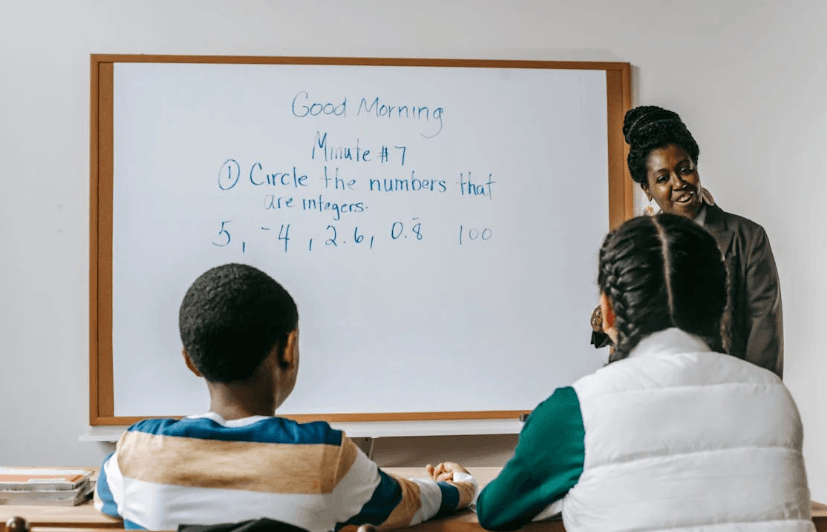
The easiest is to take paper and start drawing tables. You can prepare the multiplication table with empty fields and gaps. The task will be to fill in the missing numbers. You can ask your child to prepare this task for you. During the process, the pupil will think about patterns and develop a strategy for them, remembering each time at the table.
Top 7 ways to learn multiplication facts
- Visual memory
- Poems to memorize
- Learn by tables
- Simplifying tips
- Object lesson
- Addition method
- Finger-counting
Visual memory
This method is considered the easiest way to learn multiplication and at the same time very practical. It involves using the Pythagorean square. The numbers of the natural series there are located horizontally and vertically, and their products are located at the intersection of the two values.
This square has existed for more than four thousand years and helps to visually remember numbers. Its use is one of the fastest learning methods you can start practicing with the child. This is because the Pythagorean square is easier for most children to understand than the column examples. This method is determined to help see the sequence and principle of numbers.
Poems to memorize
The multiplication table is a difficult topic to learn for all children. Therefore, a special approach should be used. For example, studying the Pythagorean theorem with the help of small poems. Help kids learn the following multiplication table in such an unusual and curious way. There are original quatrains for all expressions. You can memorize them with your children and use them even in everyday communication.
Learn by tables
Another way to help your youngster learn multiplication is to do it column by column. This method involves gradual memorization. For example, a new number every day. After mastering each subsequent column, it is necessary to repeat everything from the beginning. For instance, say the schoolboy got to the number 4 and memorized all the values. Ask your child to demonstrate new knowledge starting with unit one.
Simplifying tips
In particular, there are certain logical connections and regularities in the multiplication concept. Explain the secret of the multiplication tables to memory and your child will find it easier to acquire new information. By perceiving the following regularities, the learning process will become faster:
- If one of the factors is a two, the same number must be added to the second number. For example, 6*2 = 6 + 6 = 12.
- Multiplying any number by one, we get the same number (5*1 = 5).
- If the factor is number five, the product will end in either five or zero. Even numbers will have a zero at the end, and odd numbers will have a five.
- Another life hack for five: to multiply an even number by five, you need to take half of it and add 0. Let’s take the example of 8*5. It is necessary to divide 8 and 4 in half before adding 0. It turns out that 5*8 = 40. This option does not work with odd numbers, so it is better not to consider them as an example.
- If the factor is 10, the product always ends with 0 and begins with the second digit in the example: 10*3 = 30, 10*7 = 70.
- It is better for children to learn the multiplication table by five, knowing that the results in it are half as small as in the column by 10: 5*6 = 30, 10*6 = 60.
- If you want to perform an arithmetic operation with 9, you need to add 0 to the original number and subtract the same number. In the expression 7*9, the solution will be similar if 70 – 7. 70 – 7 = 63, so 7*9 = 63.
Object lesson
One way to explain the logic of multiplication is to use real-world objects. For example, take out all the toys from the basket and divide them into pairs. If you are teaching children table 2, give them four pairs of objects to make 8, so 2*4 = 8. They will understand that four sets of 2 are 8. Also, let the children take these toys to school. Such fun ways to learn multiplication will stimulate them to study the topic more.
Addition method
The best way to learn multiplication tables is to use this method. For example, if you want to multiply 5*5, you can add that number five times to get the correct answer: 5+5+5+5+5 = 25, which is 5*5 = 25.
To move to the next stage of learning the multiplication table, children can add a number to the result of the previous multiplication. For example, to get 5*6, add five to the last result and you have 30. This method helps children become familiar with the following sequences in the multiplication table.
Finger-counting
Your child can also use fingers to learn the times table by 9. Start by spreading all 10 fingers in front of you. To calculate 9*1, lower the left little finger. What’s left? 9 fingers!
For 9*2, drop the left ring finger. What is left now? 1 finger and a space followed by 8 fingers is 18. This method works up to 9*9 (8 and 1 or 81). But when teaching such tricks, don’t forget to explain the concept of multiplication. This easy way to learn multiplication will help your child to remember table by 9 faster.
How to memorize multiplication tables in one day?
Despite the broad number of fun ways to learn times tables, it is impossible to memorize the table in one day. You can try to force the child to remember the table, but this knowledge will be temporary.

Children should understand the meaning of the table, perceive it, and then start learning. In addition, the knowledge is getting better with practice.
How long does it take to memorize multiplication tables?
On average the period for learning multiplication tables takes up to a month or even more. The duration depends on several circumstances among which are:
- Available knowledge and skills of your child
- Regularity of lessons
- Approach to learning
- Implementation of methods and tips on learning multiplication tables
- Encouragement of student
- Individual peculiarities
The important notice is to repeat tables from time to time. Once your child has mastered the multiplication table, it’s time to test that knowledge regularly.
Note: It is best to do this when nothing special is happening and the child can concentrate as much as possible. For example, when you take them to school or wait for the bus. In addition, try to make such exercises regular, and choose a specific time for them to build a system.
Steps in learning the multiplication table
The process can be divided into several categories:
Preparation
This stage includes purchasing necessary materials like games, cards, books, and copybooks. The multiplication table which you will use for learning should be interesting for the child. With that in mind, explain to the youngster the necessity of buying it and allow them to choose the table. If the child likes it, you will find it easier to start lessons later and pay attention to the learning.
First meeting
Introducing the multiplication table to the child and explaining the need for learning. Actualizing the necessity of learning will boost attention. At this stage, you can create a system of encouragement. Such an approach will motivate them to learn better. Explain the basic secrets of how to make learning faster and more understandable.
Day-to-day learning
At this stage, you have to practice lessons with a multiplication table every day. During the first days, it can be hard to focus attention. However, by insisting on regular practice, you will find it useful and fruitful. The length of the lessons can be increased gradually.
Relaxing days
Learning multiplication tables should include breaks for your child. The child cannot learn new information every day. An easy way to learn multiplication tables consists of regular lessons and rewards. After each table, you can have a day off.
Repetitions
Even on days off, you can review the tables with your child. For instance, at the market, you can ask your kid to count something. The information will appear in memory and children will remember patterns better.
Mistakes in learning multiplication facts
- Don’t compare the child with their classmates – this is not only unpleasant but also dangerous for the child’s psyche.
- Don’t practice in a bad mood.
- Don’t scold or punish for bad grades and mistakes.
- Start learning gradually, rather than forcing your child to learn the entire multiplication table in one day.
Conclusion
To conclude, there are a lot of ways to memorize the multiplication table. How to learn multiplication? Start implementing different methods and techniques to turn this process into a joyful one. Children should feel it as enjoyment rather than force. It is important to use different methods as a whole.
Once you feel you cannot get in with all techniques, ask for assistance. An education platform with interactive tools is a great chance to improve your child’s level of knowledge and save you time. The learning period will take more than one month while repetitions are the essential part of memorizing the tables.
